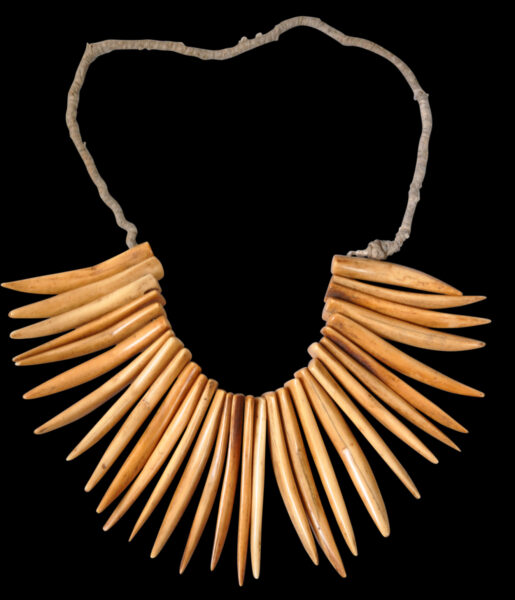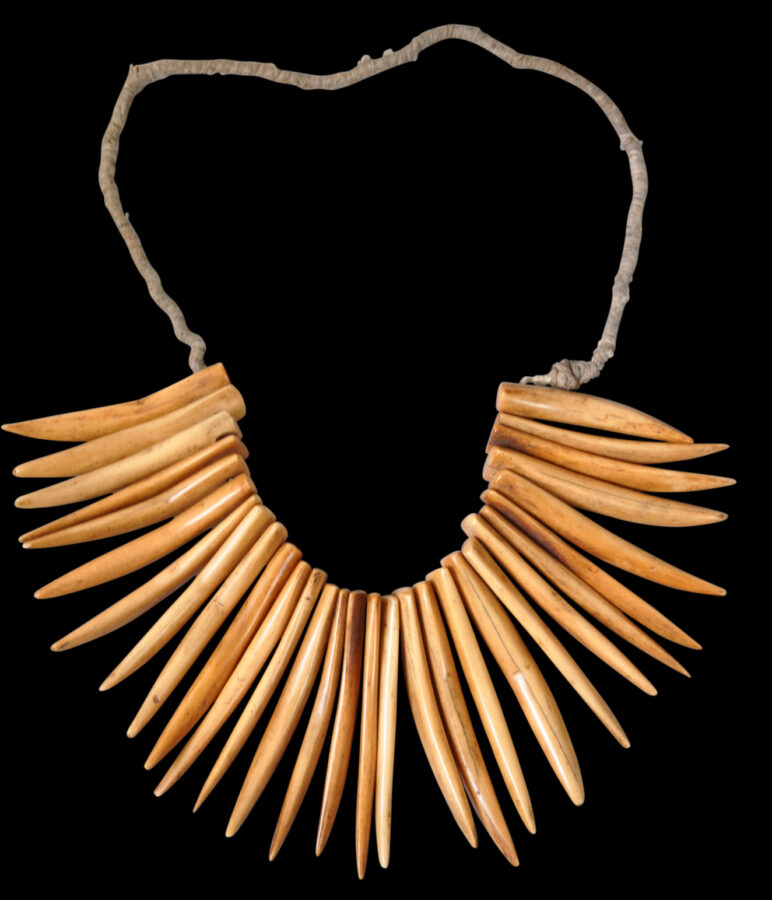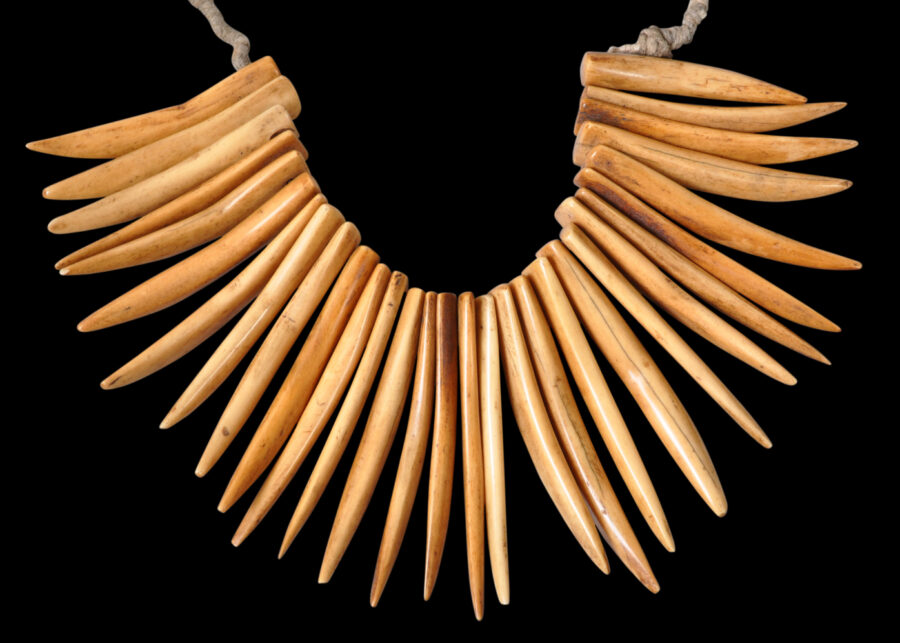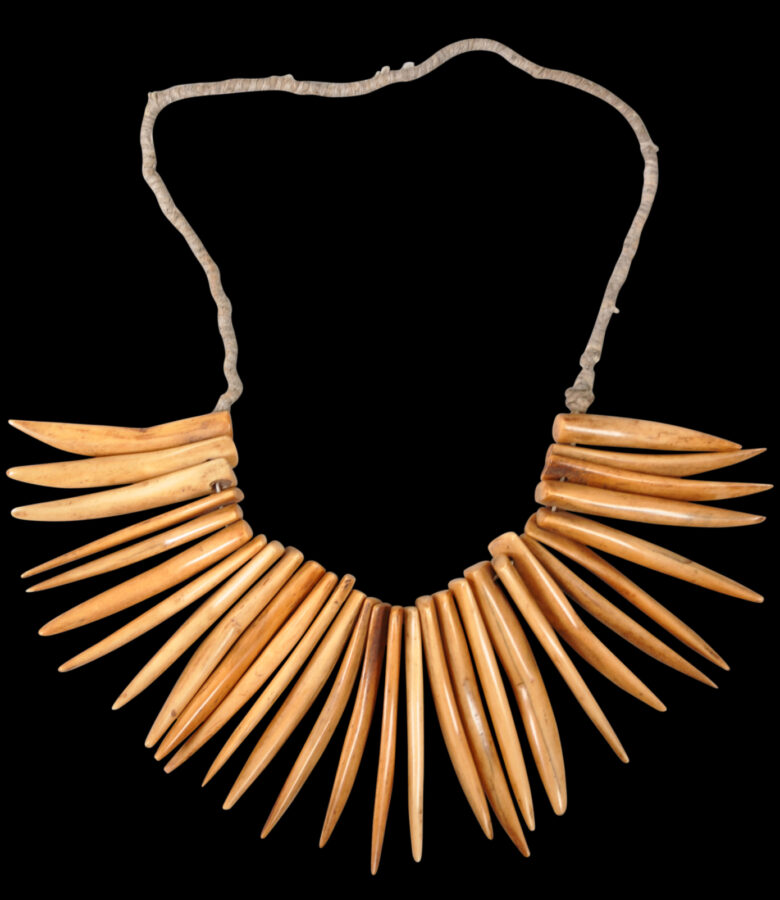This necklace (waseisei or wasekaseka) of thirty ‘tusks’ would have been carved and sawn by a Tongan craftsman for a Fijian chief. (‘Full’ or complete necklaces seem to have around thirty elements.) Each component has been carved from sperm whale teeth. From the early 19th century, Tongan traders brought sperm whale teeth to Fiji along with other trade goods and necklaces such as this example circulated throughout Fiji, Tonga and Samoa (Kaeppler, 2010, p. 213).
Each element has been craved to resemble a tusk being curved and ending in a point. The natural curve of the sperm whale tooth allows each ‘tusk’ to have the curve that it does. Each has been polished and then drilled with a hole to allow suspension. Much of the original fibre sennit remains but that on which the tusks are threaded is a later threading.
Such necklaces were worn but were also an important part of gift exchange between chiefs and between chiefs and visitors to the islands.
The necklace has a wonderful patina – each element has a lovely yellowed colour. Most of the tusks are in good order, with only the occasional minor, age-related chipping.
References
Herle, A. & L. Carreau, Chiefs & Governors: Art and Power in Fiji, Museum of Archaeology and Anthropology, University of Cambridge, 2013.
Hooper, S., Pacific Encounters: Art & Divinity in Polynesia 1760-1860, British Museum Press, 2006.
Kaeppler, A. L., Polynesia: The Mark and Carolyn Blackburn Collection of Polynesian Art, University of Hawaii Press, 2010.





